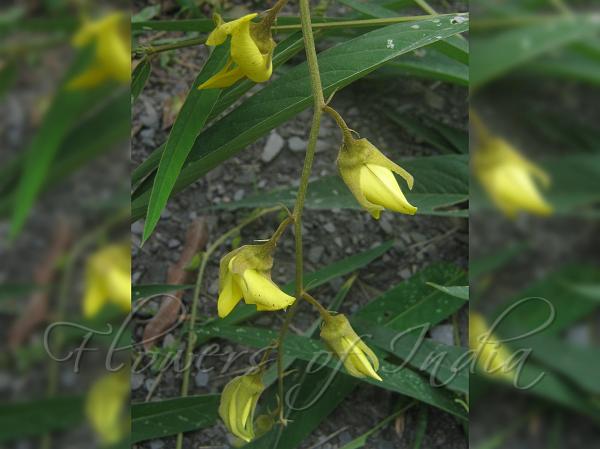|
| Eastern Rattlepod |
|

|

| File size | 276423 |
| Original date | 9/7/11 12:38 PM |
| Resolution | 2048 x 1536 |
| Flash | Flash did not fire, auto |
| Focal length | 6.6mm |
| Exposure time | 1/250s |
| Aperture | 3.0 |
| Focus Distance | |
| Metering Mode | Multi-segment |
| Camera make | Canon |
| Camera model | Canon PowerShot A495 |
| Sensor type | OneChipColorArea |
|
|
|
|
Photo: |
Botanical name: Crotalaria tetragona Family: Fabaceae (Pea family)
Synonyms: Crotalaria grandiflora, Crotalaria esquirolii
Synonyms: Crotalaria grandiflora, Crotalaria esquirolii
Eastern Rattlepod is an erect herb, up to 2 m tall.
Branches are 4-angled, silky velvety. Stipules are linear to
linear-lanceshaped, 4-5 mm. Leaves are simple, carried on about 4 mm
long stalks. Leaves are oblong-elliptic to linear-lanceshaped, 10-20
cm long, 1-2.5 cm wide, both surfaces finely velvety, midvein pale and
prominent on the underside, base broadly wedge-shaped to broad, tip
pointed to somewhat long-pointed. Flowers are borne in racemes at
branch ends or leaf-opposed, 6-10-flowered. Bracts are lanceshaped, 4-6
mm. Flower-stalks are 1-1.5 cm. Bracteoles are inserted at tip of
flower-staks, linear, 3-4 mm. Sepal tube is 2-lipped, 1.5-2.5 cm,
divided to near base, densely brown hairy, lower sepals narrowly
triangular-lanceshaped, fused for about 1/4 of length, 4-5 mm wide at
base. Upper sepals are similar, divided to near base. Flowers are
yellow, pea-shaoped. Standard petal is circular to oblong, about 2.5
cm, base with 2 appendages. Wings are narrowly elliptic to
lanceolate-elliptic, about 2 cm; keel about as long as wings, broad and
rounded, lower margin woolly, beak long, twisted, and protruding beyond
calyx. Seed-pod is oblong, 4-5 cm, 10-20-seeded, densely brownish
yellow pubescent. Eastern Rattlepod is found in the Himalayas, from
Kumaun to Bhutan, Assam, SE Asia and China, at altitudes of 200-1700 m.
Flowering: September-November.
| Identification credit: Krishan Lal | Photographed in Sirmaur Distt, Himachal Pradesh. |
• Is this flower misidentified? If yes,